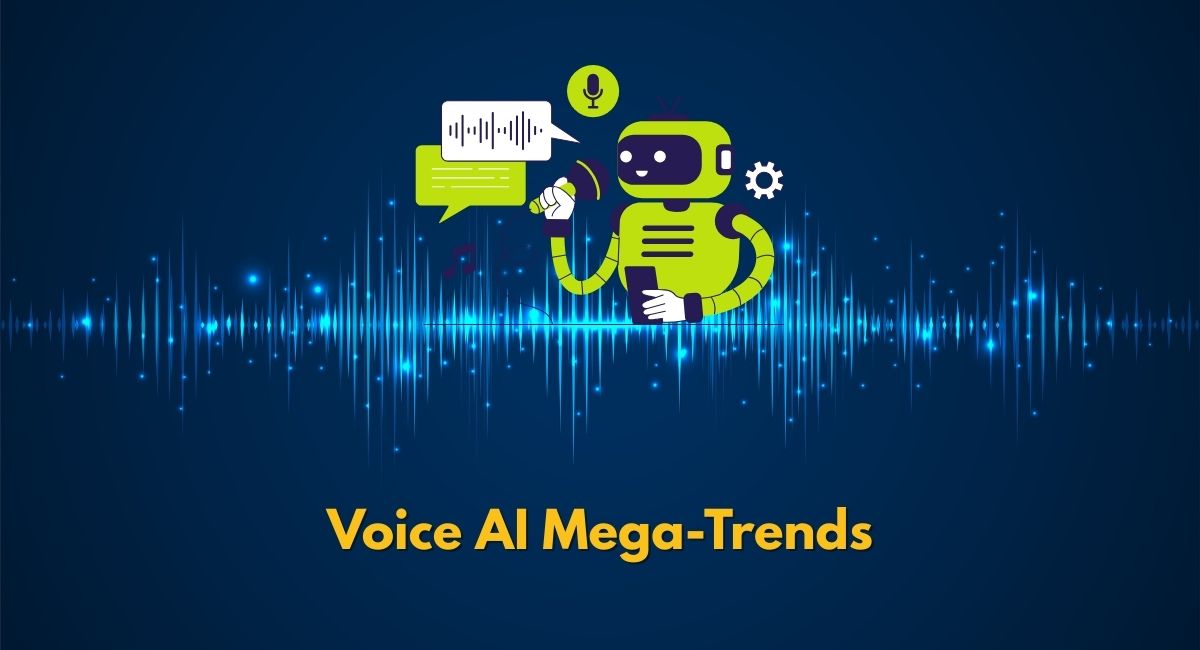Voice AI is no longer a future technology, it’s already shaping our interactions with it. The tools will become smarter, more human-like, and deeply integrated across industries by 2025. You need to know about these 5 mega-trends in voice AI.
Voice AI will transform customer service, healthcare, education, and entertainment by enabling seamless, personalized interactions. Its ability to understand context, emotions, and accents will make communication more efficient. Industries will rely on voice AI to enhance user experiences and streamline operations, driving innovation and growth.
Contents
1. Hyper-Personalized Interactions
Voice AI is evolving to understand you, not just your words. Advanced machine learning allows AI assistants to track preferences, behaviors, and context, offering responses tailored to individual users.
For example, an AI shopping assistant can suggest products based on your purchase history, browsing patterns, or even mood. Over time, these assistants will “remember” past interactions and refine recommendations, making every conversation more meaningful.
Pro Tip: Start small—integrate browsing or purchase history first to create a personalized experience.
2. Multimodal & Multilingual AI
By 2025, voice AI won’t be limited to speech. Expect multi-modal systems that handle text, images, video, and voice—often simultaneously.
These AI systems can also speak multiple languages, understand local accents, idioms, and cultural references, making interactions feel natural and inclusive.
Benefits:
- Global Storytelling: Reach audiences across markets effortlessly.
- Seamless Localization: Deploy AI tools without extensive rework.
- Enhanced Accessibility: Support non-native speakers and differently-abled users.
Pro Tip: Leverage multilingual AI to expand your business globally without additional human translators.
3. Ethics & Regulation in Focus
As voice cloning and deepfake technology grow, ethical concerns are rising. Businesses and governments are establishing regulations for AI voice use—especially in political campaigns, brand protection, and fraud prevention.
Key Impacts:
- Protect brand identity through verified voice profiles.
- Ensure compliance with evolving AI regulations.
- Clearly label AI-generated content to maintain consumer trust.
4. Real-Time Translation & Transcription
Imagine speaking to anyone in the world and being instantly understood. AI-driven real-time translation is set to become mainstream, along with live transcription.
This technology will transform global collaboration, customer support, and accessibility. People who are deaf or hard of hearing will benefit from instant transcripts, while international teams can communicate effortlessly.
Pro Tip: Integrate AI transcription into meetings to save time and improve documentation accuracy.
How to Generate AI Text-to-Speech with Emotion
We are revolutionizing communication in the digital age by using AI text-to-speech with emotion.
5. Voice AI Across Industries
Voice AI is already transforming key sectors:
Healthcare
- Virtual Assistants: Schedule appointments, provide reminders, and manage patient intake.
- Accessible Care: Hands-free interactions for patients with disabilities.
- Medical Training: Real-time transcription for consultations and research.
Customer Service & Retail
- 24/7 AI support for common inquiries.
- Personalized shopping recommendations.
- Seamless experiences across web, mobile, and in-store.
Education & E-Learning
- Adaptive lessons and real-time question responses.
- Natural-sounding voice interfaces for accessibility.
- Advanced language learning with pronunciation feedback.
Media & Entertainment
- AI-generated voiceovers reduce production costs.
- Automated dubbing and localization.
- Voice-driven characters enhance gaming and storytelling.
Automotive & Smart Homes
- Hands-free vehicle controls.
- Personalized in-car settings.
- Integrated home and car ecosystems.
Banking & Finance
- Secure, voice-authenticated transactions.
- Fraud detection via voice biometrics.
- Tailored financial advice and recommendations.
Final Thoughts
By 2025, voice AI will:
- Capture human-like emotion
- Speak multiple languages
- Integrate across platforms
But with great capability comes the need for ethics and transparency. Businesses that adopt voice AI early will gain a competitive edge, offering seamless, personalized, and inclusive experiences.
Pro Tip: Begin small—pilot AI in one department, track performance, and expand as results show success.
Rohit Kumar is a tech enthusiast and blogger who shares practical tips, insights, and reviews on AI, digital tools, and the latest technology trends.







